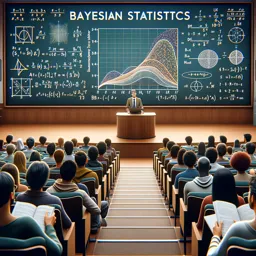Bayesian statistics is a powerful approach to statistical inference focused on updating probabilities as new evidence or information emerges. Unlike traditional frequentist statistics, Bayesian methods incorporate prior beliefs or existing knowledge into the analysis and refine those beliefs using fresh data.
The Core Concept: Bayes’ Theorem
At the heart of Bayesian statistics lies Bayes’ Theorem, a formula that updates the probability of a hypothesis based on new evidence:

Where:
- P(H|E) is the posterior probability—the likelihood of hypothesis H being true given evidence E.
- P(E|H) is the likelihood—the probability of observing evidence E assuming H is true.
- P(H) is the prior probability—the initial belief about the hypothesis before seeing data.
- P(E) is the marginal probability—the overall probability of observing the evidence.
Why Use Bayesian Statistics?
Bayesian methods excel when prior knowledge or expert opinions exist and need to be updated logically as new data arrives. This flexible framework is especially valuable for modeling uncertainty and making predictions in data-scarce environments.
Comparing Bayesian and Frequentist Approaches
Frequentist statistics views parameters as fixed but unknown values, whereas Bayesian statistics treats parameters as random variables with probability distributions. This allows Bayesian models to incorporate previous results and expert knowledge directly.
Practical Applications of Bayesian Statistics
- Medicine: Refining diagnoses and treatment effectiveness with incoming clinical data.
- Machine Learning: Creating adaptable probabilistic models that improve with more data.
- Finance: Continuously updating market forecasts as new economic indicators appear.
- Engineering: Enhancing reliability assessments and risk analysis through iterative updates.
Limitations and Considerations
Bayesian analysis requires specifying a prior distribution, which may introduce subjectivity. The computational demands can be high, though modern tools and algorithms have made Bayesian methods more accessible.
Conclusion
Bayesian statistics provides a coherent framework for integrating past knowledge with new information, making it invaluable for researchers and decision-makers needing to update their understanding continuously. Mastering Bayesian concepts enriches your analytical toolkit and supports informed, evidence-based decisions.

























